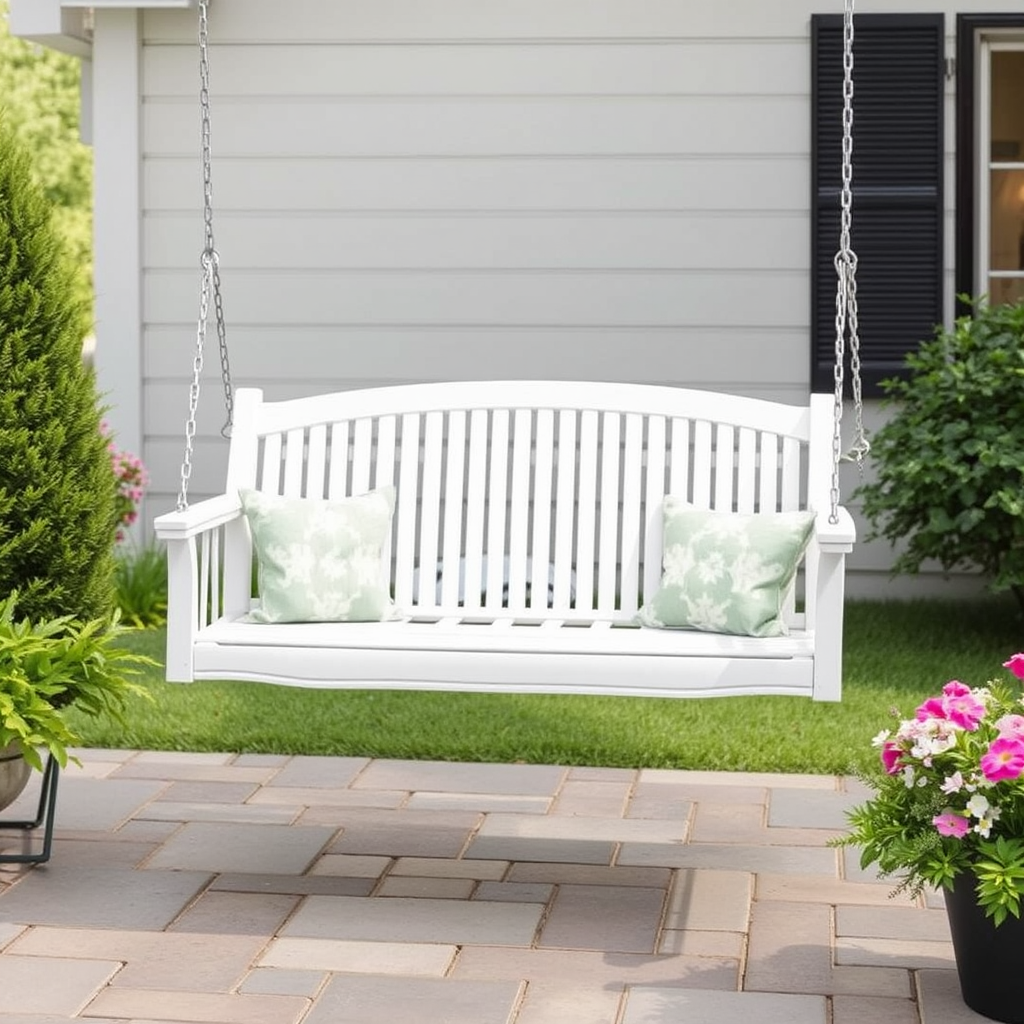Understanding Your Space and Needs

Before selecting a garden swing, it is essential to assess your outdoor area and the specific needs of its users. The first step is to consider the size of your garden, as this will significantly influence the type and dimensions of the swing you choose. A large garden offers ample space for larger swings or even multiple swings, while a compact garden may require more careful consideration of space-saving models. Evaluate the layout and landscape design, including any existing structures such as patios, fences, or flower beds, to ensure that the swing will fit harmoniously within your outdoor environment.
In addition to the spatial dimensions, consider your existing outdoor furniture. If your garden already features seating or relaxation areas, it may be advisable to select a swing that complements the overall design, creating a cohesive aesthetic in your outdoor space. The proximity to trees or other structures is another critical factor. This not only impacts the swing’s location but also affects safety and the amount of natural shade available for comfort.
The needs of the users are paramount when choosing a garden swing. It is crucial to determine how many people will typically use the swing, as this will guide you in selecting the appropriate size and type. For instance, a family swing can accommodate multiple users, while a smaller swing may be more suitable for individual use. Additionally, the desired comfort level plays a significant role; some swings feature cushioned seats, while others may be more minimalistic. Identifying any special features, such as the swing type—whether it’s a traditional porch swing, a hanging chair, or a glider—will also enhance the experience for users. By carefully considering these factors, you can ensure that you select a garden swing that meets both the functional and aesthetic needs of your outdoor space.
Exploring Various Types of Garden Swings
Garden swings come in several styles, each providing unique features and benefits. One of the most classic options is the traditional porch swing. Crafted usually from sturdy woods like cedar or teak, these swings evoke a sense of nostalgia and charm. They are perfect for larger outdoor spaces and can comfortably accommodate multiple individuals. The gentle rocking motion promotes relaxation, making them ideal for enjoying a leisurely afternoon.
Another popular choice is the hammock swing, which offers a more relaxed and casual seating option. Typically made from soft cotton or durable polyester, hammock swings are suspended from a single point, allowing them to sway freely. This type of swing is perfect for lounging, and it tends to provide a cozy retreat for those who enjoy reading or napping outdoors. Their lightweight nature allows for easy relocation, an attractive feature for those who like to rearrange their garden layout.
Gliders are a modern twist on the traditional swing, featuring a bench that moves back and forth smoothly on a metal frame. This design not only makes it easier to get in and out of the swing but also provides a unique aesthetic with sleek lines and contemporary materials. Often constructed from weather-resistant materials like aluminum or composite, gliders require minimal maintenance while offering comfort for prolonged use.
Lastly, modern hanging chairs have surged in popularity due to their unique design and versatility. These chairs—often encased in a supportive framework—are available in various materials such as wicker or metal. They provide a fun and relaxed vibe, making them excellent for smaller spaces. Whether suspended from the ceiling or a sturdy stand, their eye-catching appearance adds a stylish element to any outdoor setting.
Regardless of the style chosen, it is crucial to consider the durability and maintenance of the materials used. Selecting the appropriate garden swing can not only enhance aesthetics but also provide comfort and functionality for years to come.
Safety and Durability Considerations
When selecting a garden swing, prioritizing safety and durability is paramount to ensure a satisfying and long-lasting experience. An effective swing must adhere to specific safety standards, which typically include defined weight limits. Each garden swing should come with a clear indication of the maximum weight it can accommodate, ensuring it is suitable for all intended users. Exceeding this limit can lead to serious accidents, making it crucial for consumers to follow these guidelines closely.

Stability is another critical aspect in the design of garden swings. A well-constructed swing will exhibit a robust frame constructed from high-quality materials to prevent tipping or collapsing during use. Proper secure mounting options should also be implemented, allowing the swing to be anchored firmly to the ground or surrounding structure. This ensures that the swing remains stationary, minimizing any risk of injury caused by sudden movements. If you’re considering a freestanding swing, it’s essential to assess its base’s weight and structure, as these features will contribute significantly to its overall stability.
Evaluating the durability of materials is equally important when choosing a garden swing. Swings crafted from weather-resistant materials such as high-density polyethylene, treated wood, or powder-coated metal are ideal as they can withstand various environmental conditions. Additionally, attention should be given to the construction quality—reinforced joints and rust-proof fasteners are signs of a well-built swing capable of enduring prolonged exposure to rain, sunlight, and wind. By investing in a durable garden swing, homeowners can ensure years of enjoyment, creating an inviting outdoor space that is both safe and functional.
Budgeting for Your Garden Swing Purchase
Purchasing a garden swing is a delightful addition to any outdoor space, yet it’s essential to establish a budget that aligns with your financial situation and the quality you desire. Garden swings come in a broad range of price points, generally starting from around $100 for basic models and can rise to $1,500 or more for premium options that feature durable materials and advanced designs.
At the lower end of the spectrum, you can expect metal or plastic swings with simpler designs, which may not hold up as well over time. In contrast, mid-range swings, typically priced between $300 to $700, offer a combination of sturdiness and aesthetic appeal, often incorporating features such as weather-resistant fabrics and wood frames. High-end swings, exceeding $700, generally provide exceptional craftsmanship, luxurious materials, and enhanced features like built-in canopies or reclining functions, ensuring they stand the test of time.
To maximize your budget, consider the timing of your purchase. Look for seasonal sales during spring and summer, when outdoor furniture is most in demand, and retailers often offer significant discounts. Additionally, exploring second-hand options through local marketplaces, thrift shops, or online platforms can yield hidden gems at a fraction of the original price. Many individuals sell gently used garden swings that may need minimal upkeep, allowing you to save significantly without compromising quality.
For those with a limited budget, undertaking a DIY garden swing project can be a fulfilling endeavor. There are numerous tutorials available that guide you through selecting the materials and features that suit your style while providing a unique touch to your garden. Just ensure that you account for materials and tools needed to construct a safe and stable swing.
Ultimately, being mindful of your budget while evaluating options will ensure you make an informed decision that enhances your outdoor experience with a garden swing tailored to your needs.





